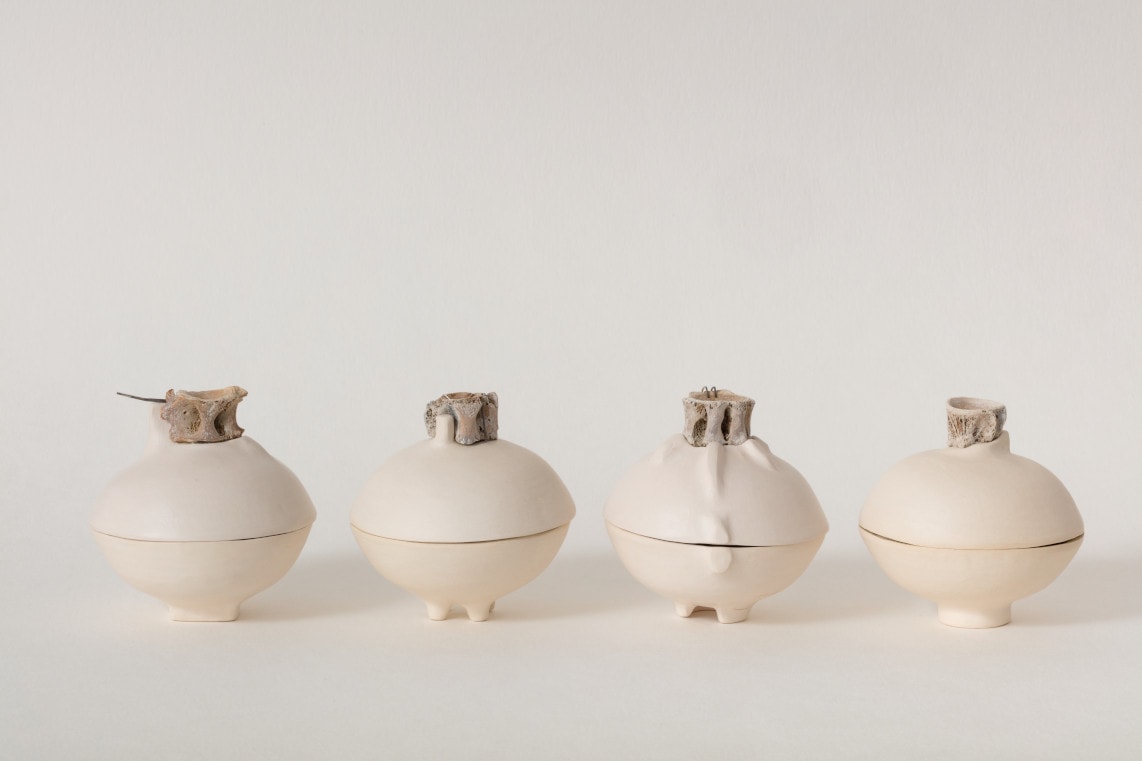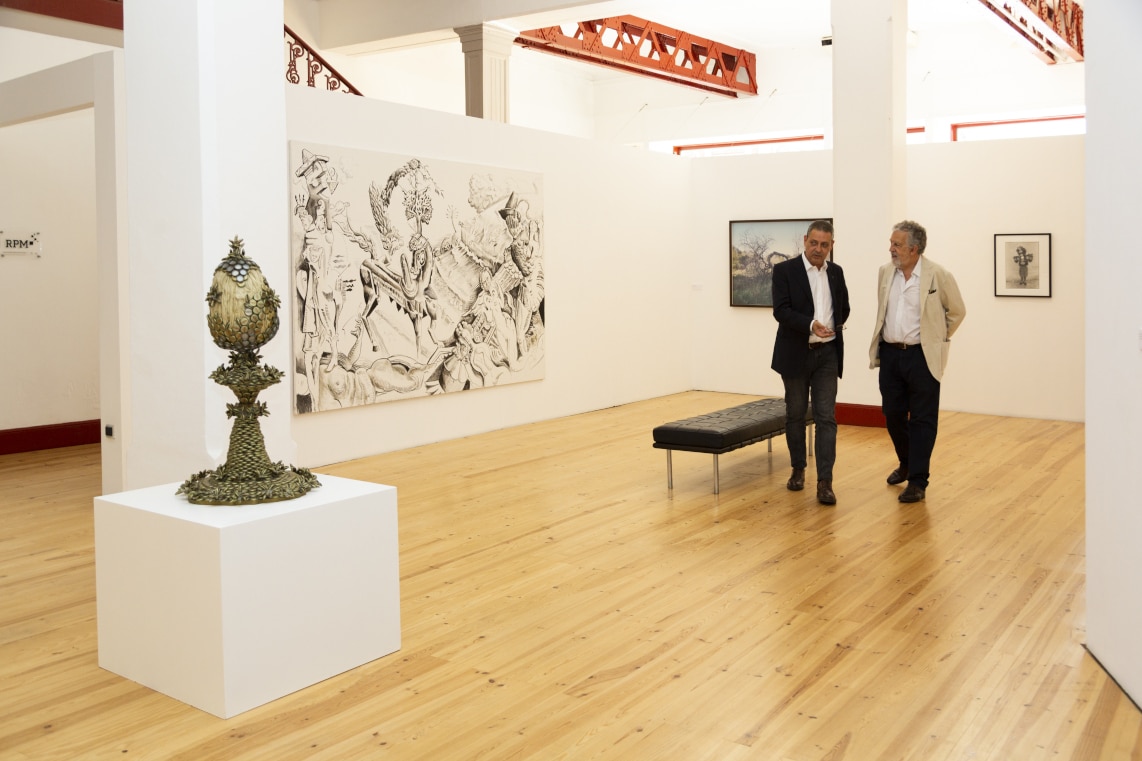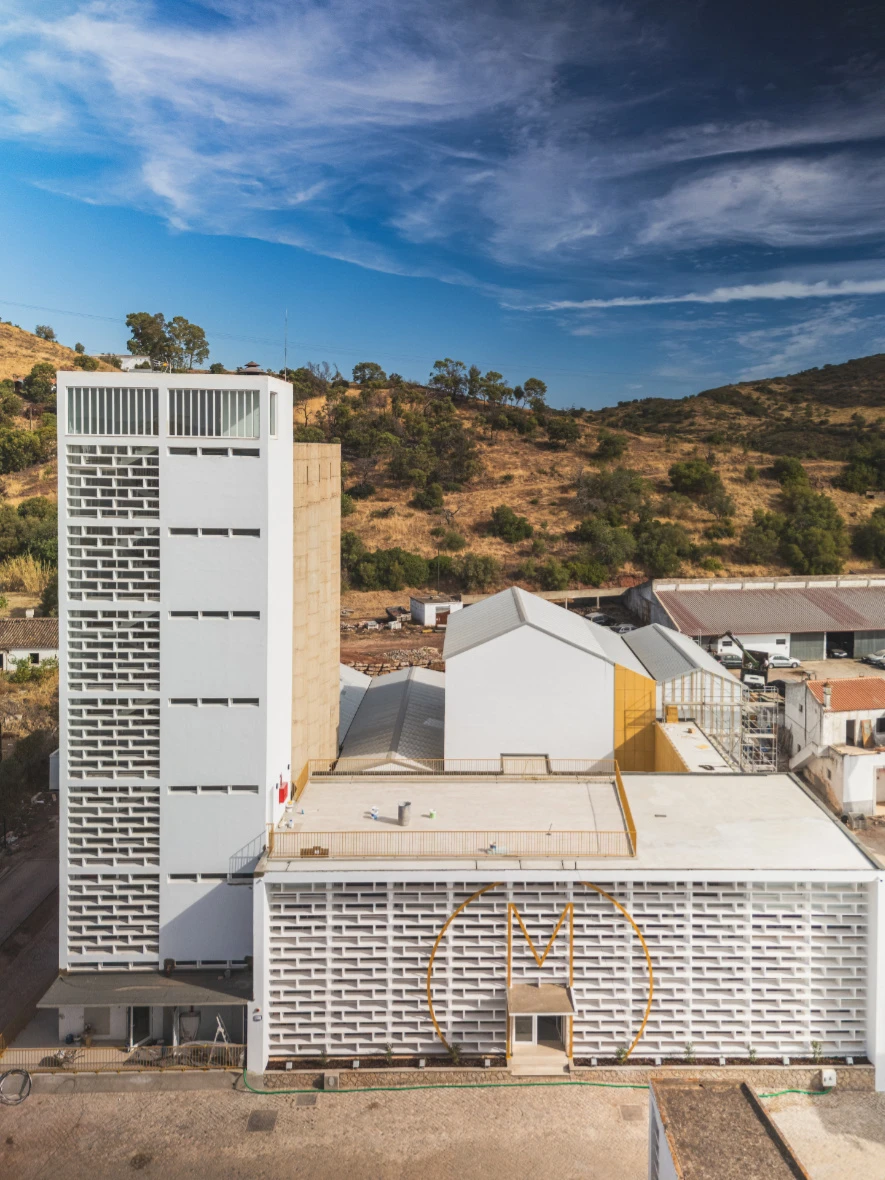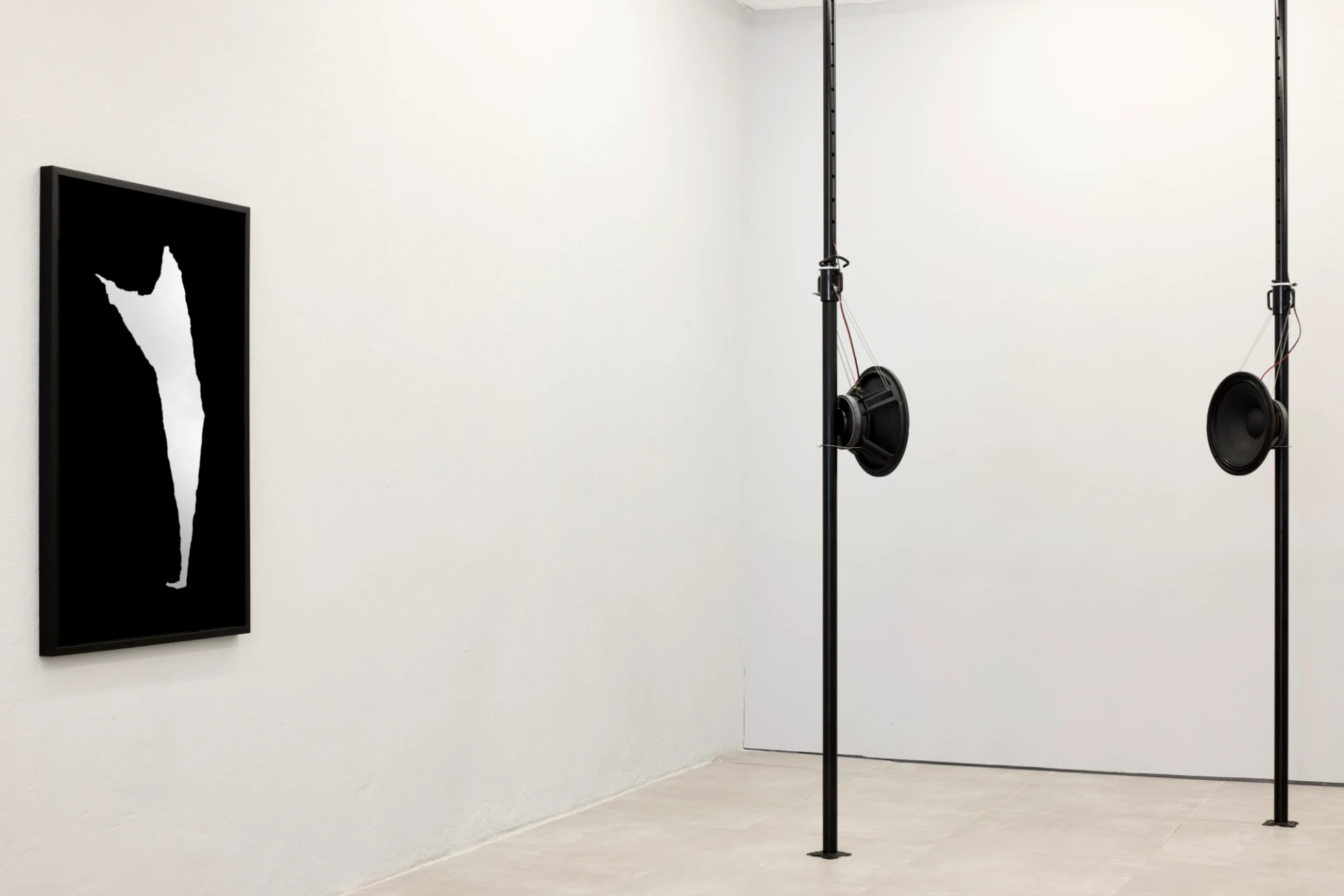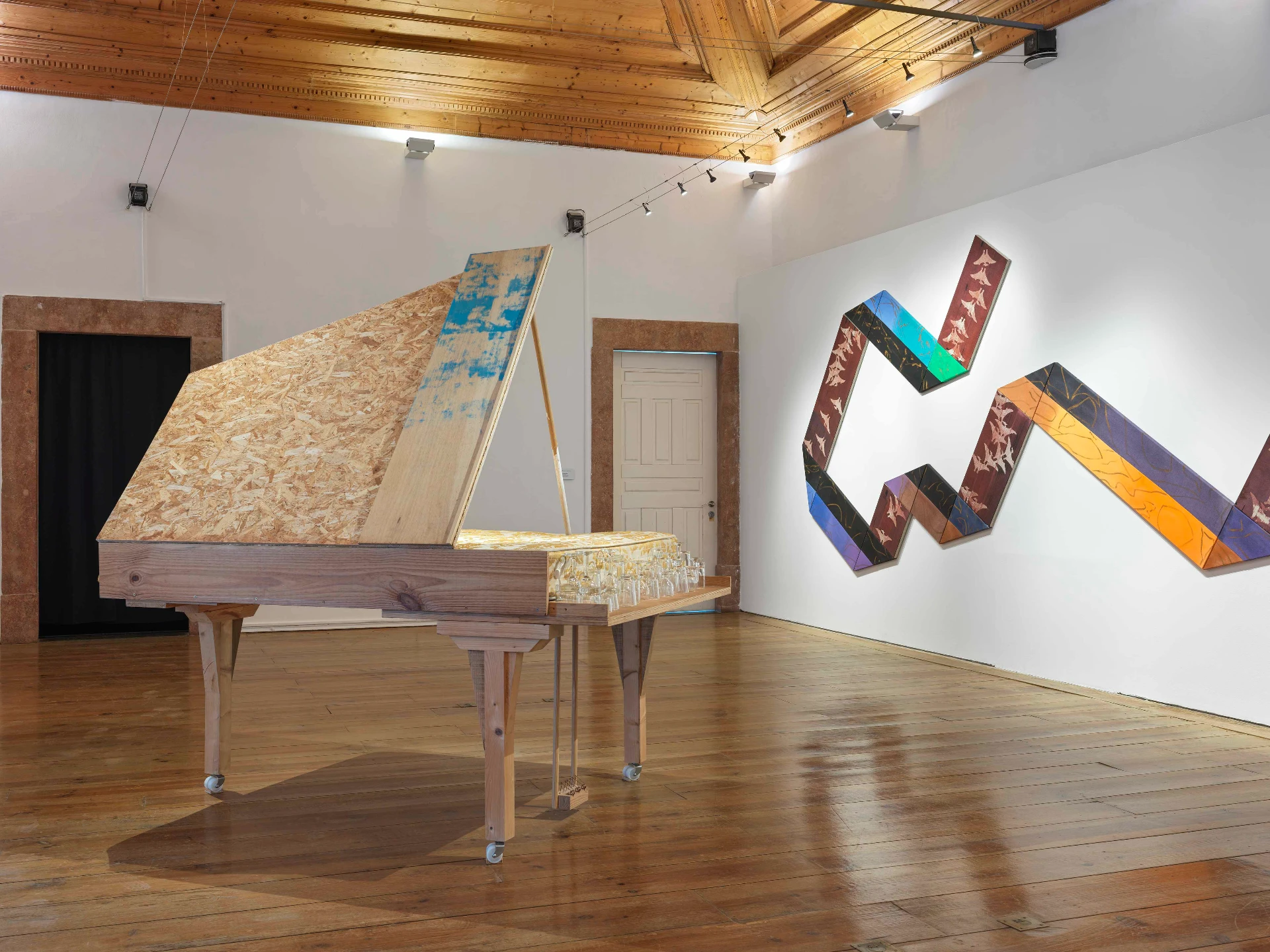When I visited In the Pink for the first time, in Loulé’s historic centre, director Pedro Vasconi showed me two beautiful corners: the renovated skylight, which lets in light over the curved staircase. And, on the upper floor, after we pass through the small service area, a window that opens onto the outside of the building, showing the back of the belfry of the also precious little Ermida de Nossa Senhora da Conceição. The historical layers of the urban centres are curious: on the street, as we walk down the pavement in front of the Ermida entrance, following the pavement bend to Avenida de República, the seventeenth century temple is supported by the modern volume that today houses the gallery, but whose construction took place more than a century ago. The asymmetry between the two is visible, especially in size. The building on the corner has three floors, topped by a balustrade that reveals a terrace, or space for a roof hidden from the eyes of passers-by; tiny and discreet, Ermida is on the side street of the main thoroughfare. But one characteristic brings both together: they are places of beauty and, in different senses, of worship.
After decades in which the ground floor was known as Casa Iria, João Iria’s clothing shop, the building today does more than just accommodate a photographic art gallery: In the Pink. German Anja and British Phil Burks decided to invest in a central space in Loulé, the urban nucleus of one of Portugal’s most touristy regions. And one where, perhaps seasonally, many art buyers congregate.
The gallery’s interest begins with the building itself. The architectural restoration is recognised by the city’s inhabitants, but easily acknowledged by first-time visitors. We clearly see the concern in maintaining the façade’s original layout and the dedication to the decorative project of the interiors, done by the Lisbon office SA&V – Sá Aranha & Vasconcelos. With the volume enhancement on the three floors (the upper ones went unnoticed when there was a shirt and jeans shop below), the now brighter pink contrasts with the straight, elegant lines of the stonework. On the other hand, the clean and spacious interior in black and white tones, plus the minimal furniture, with a high ceiling height and the imposing but unadorned staircase, creates an aesthetic beyond function. On its own, the place is worth a visit. The functional facilities have been prepared for the best possible use and this seems to have been the gallerists’ aim when they opened the gallery with an exhibition of works by three renowned names in fashion photography: Albert Watson, Bastiaan Woudt and Kristian Schuller.
The photographs by Woudt, the youngest of the three (born in 1987), are perhaps the ones that best fit this new gallery: with black and white reflecting in the expanded proportions, the walls generously welcome the figures of the models in silhouettes that stem from the trompe l’oeil created by the game of shadows and light. The choice of these photographs for the first floor seen by the visitor was not fortuitous: the classic framing, the minimalism of the tones and lines, as well as the clarity and centrality of the subject (exclusively female models) within the frame match the house’s proposal.
Upstairs, we see photographs by Kristian Schuller (born in 1970), whose production can be considered more baroque: each of the images of this photographer born in Romania, but with work done mostly in Germany, articulates several elements, open shots (many of them in outdoor spaces or in studio depicting wide areas), a complex and rich play of colours, shapes and narratives, as well as associated fashion projects. The size of the frames is also more varied here than in the other two artists in the first In the Pink exhibition.
The images of Albert Watson (born 1942), one of the most renowned masters of fashion photography of the final quarter of the 20th century, occupy the entire middle floor – consolidating or being the backbone of the exhibition. The breadth of his work on display is greater than that devoted to the other two photographers, as Watson has had his photographs on nearly half a hundred Rolling Stone covers and over a hundred Vogue issues. Among the beautiful images on show at Loulé’s new gallery are a portrait of Sade Adu from 1992, an image from the collection of London’s National Portrait Gallery; and, in a suddenly colourful corner, flanked by two of the room’s tall windows, three prints from 1977 which Watson took in the Algarve with model Juli Foster. One of them on the rectilinear elevation, topped by the dome of Igreja de Nossa Senhora da Graça, in Sagres Fortress.
Pedro Vasconi talks about selecting these three works (safe choices) to show the gallery and underline the cult of photographic beauty, resurrecting the urban building through new perspectives and dialogues with the city. The windows on the upper floors allow for unique perspectives and fit the frame of the photographs with the dynamism of the outdoor landscape. The main objective is to affirm In the Pink on the European photographic art circuit, but also in the major Western artistic centres. Being “in the pink” means being on the happy side of life: here it is equivalent to being in a formerly dying place that now revels in the allure of limpidity and beauty. To rediscover the breath of the street and the secluded calm of an art space.
In the Pink is at 69-75 Praça da República, Loulé. The current exhibition is open to the public until September 10.
